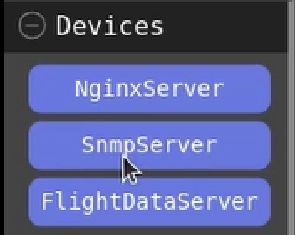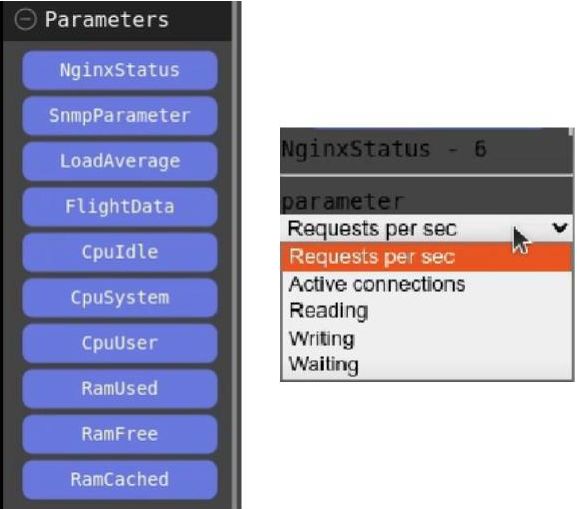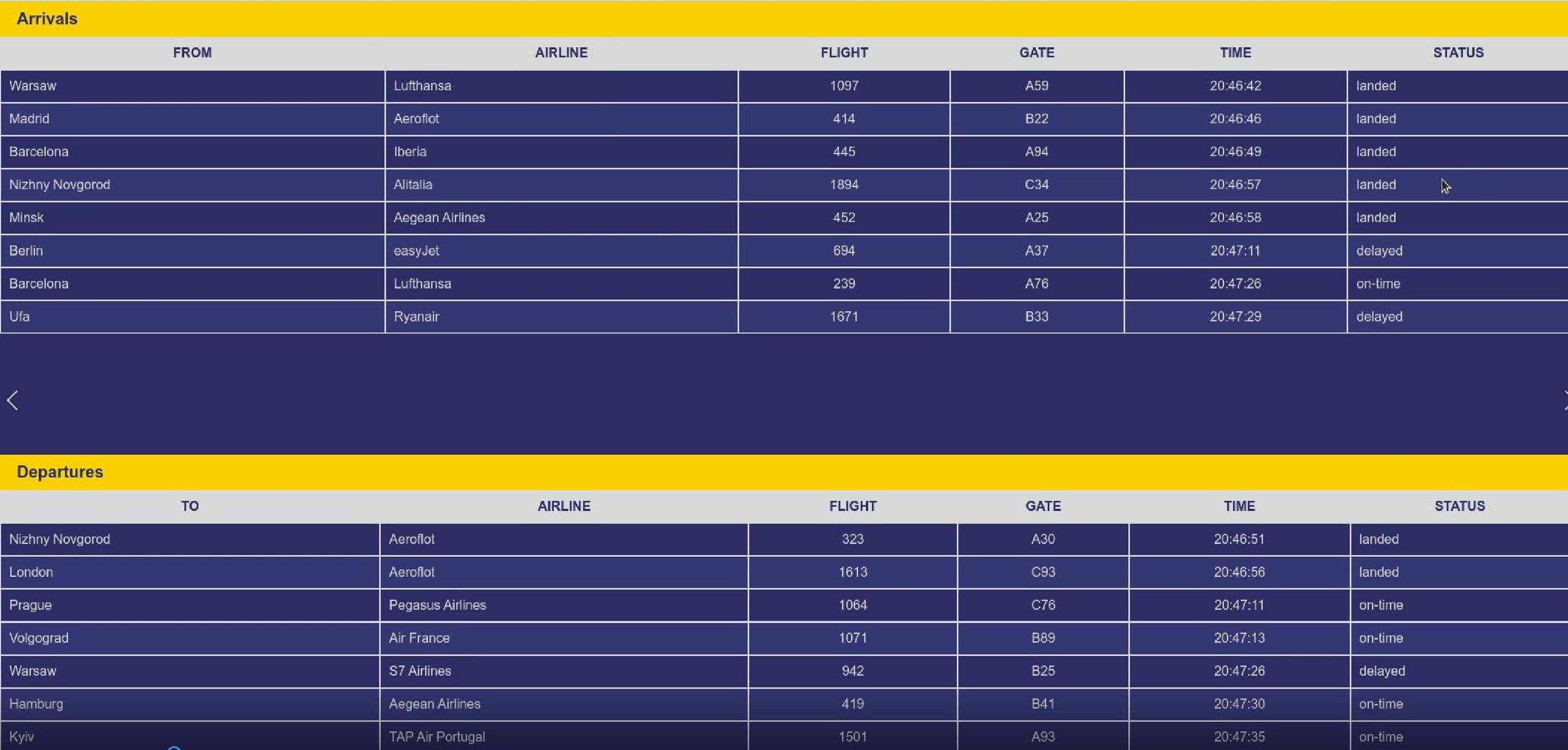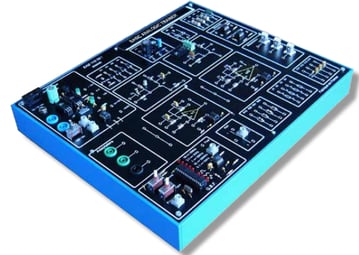SkySMC - SkyRadar’s System Monitoring and Control Suite is a pedagogically enhanced, fully operational monitoring tool. We have optimized it to cater for the ATSEP-SMC training compliant to EASA's Easy Access Rules for ATM-ANS (Regulation (EU) 2017/373) and ICAO Doc 10057.
This System Monitoring Control (SMC) solution comes as a software, installed on a server module.
The system includes a pedagogically enhanced monitoring environment and a simulated ATC environment. It connects to the various training laboratories by SkyRadar. The monitoring system is by default connected to special training infrastructure and optionally to an environment for remote monitoring experiments. It is accessible from all computers in the available laboratories including radar labs, electrical installations, electro-mechanics, electronics.
The SMC solution provides the important use cases in line with EASA's Easy Access Rules for ATM-ANS (Regulation (EU) 2017/373) ATSEP.BAS.SMC.
Features of the SMC Solution:
- monitoring availability, performance and events related to ATC subsystems and network devices (i.e. SkyRadar NextGen Radar and Motor)
- software features include:
- Configurable Monitoring Software in "FreeScopes" style
- Comfortable graphical configurator with block diagrams
- Continuous (graphs over time) and discrete analytics (status indicators)
- Various communication protocols including SNMP, JSON
The System Monitoring and Control Solution includes by default and on a separate server:
- simulated ATC environment (default)
It allows for connection to
- the 8 GHz Training Radar, motor and server (extension)
- the Radar and Tower simulator (extension)
- a representative hardware infrastructure consisting of 3 rack servers, enforced errors in software and hardware (extension)
- technical training labs, enabling to set up a monitoring system and to train error fixing (extension)
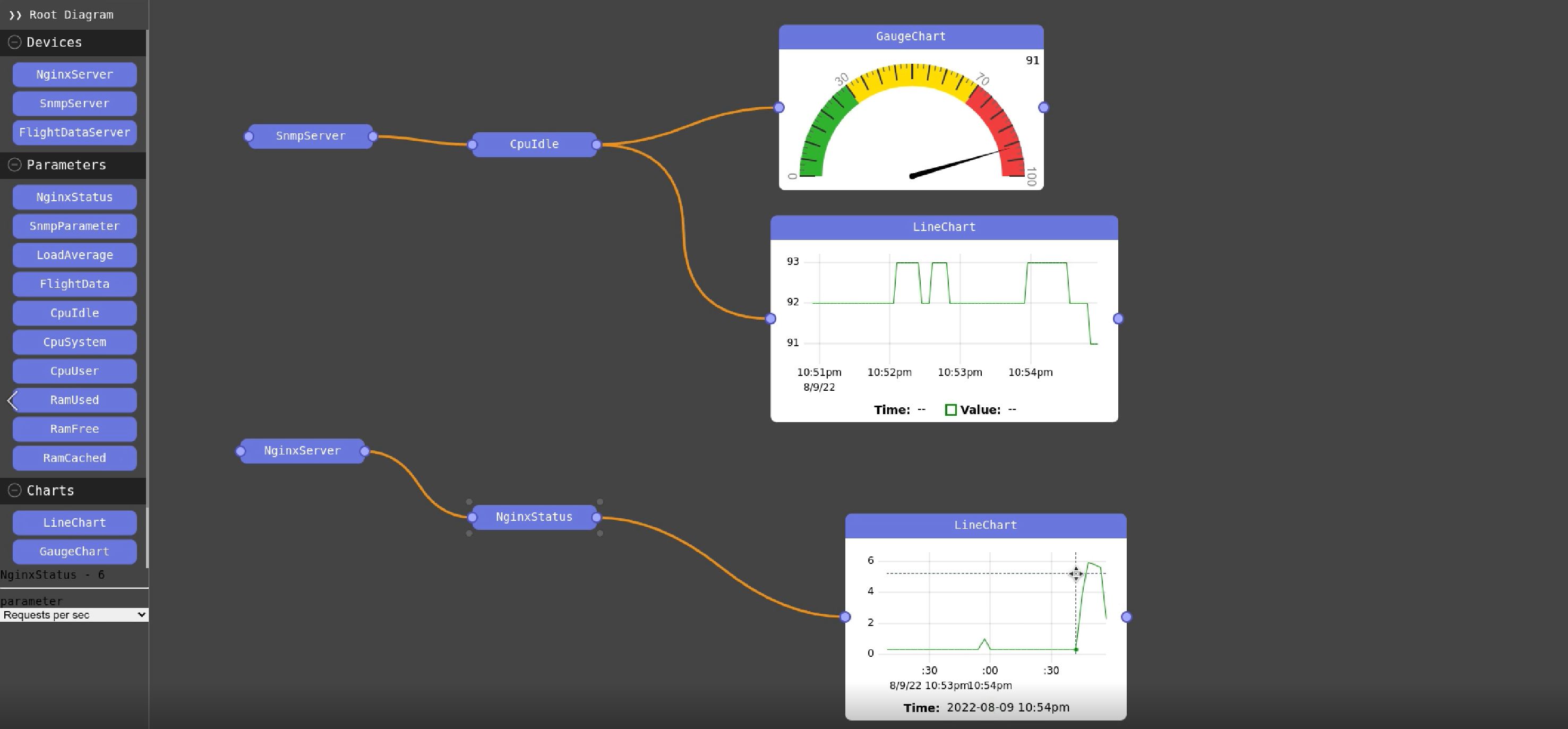
POSSIBLE USE CASES & EXERCISES
In the following we will list examples of possible use cases, which can be trained on and with SkySMC.
Main monitoring and control architecture (examples)
Surveillance
- Radar stations: radar unit with transmitter/receiver and antenna,
- data-communication,
- System health surveillance (e.g. temperature),
- Processing,
- Display
Communication
- Tx/Rx,
- Circuit management
- Networks,
- HMI,
- Standby facilities,
- Recording
Navigation
- NDB
- VOR
- ILS
- DF
Facilities
- Power,
- UPS and battery,
- Environmental (heating,
cooling), - Fire and security
DP
- Pedagogical FDPS
- Data communications
System Configuration
- Equipment of channel switching, software-based or physical switching
- Parameter settings
- Choice of monitoring strategies, sensors, protocols (e.g. SNMP, JSON)
- Working with OIDs (Object Identifiers)
- SMC across FIRs and country borders
Monitoring and Control Functions
Monitoring Functions
- BITE
- Status
- Parameters
- Software watchdogs
- Hardware watchdogs and sensors
Control Functions
- Switching
- Parameters
- Set configurations
Equipment Operating (Principles of Ergonomics of HMI and SMC central system and subsystem)
- Permissions,
- Control tokens,
- Ergonomic conventions (e.g. green is
good or safe, red is fail or unsafe)
FEATURES
Let us now look at major features in the system control and monitoring software. The amount of features offered is growing on a weekly basis. So best have a regular look at the SkySMC product page on our website to always see the most recent version.
Devices (software building blocks)
Devices are the units to be monitored.
The SMC solution includes e.g.
- NGINX - a commonly used is a web server that can also be used as a reverse proxy, load balancer, mail proxy and HTTP cache. The ATC environment includes a sample websites, its IP is 172.17.02.
- SNMP server - SNMP is widely used in network management for network monitoring. SNMP exposes management data in the form of variables on the managed systems organized in a management information base (MIB) which describe the system status and configuration. These variables can then be remotely queried (and, in some circumstances, manipulated) by managing applications. In the example it is a pure SNMP server. IP 172.17.03
- Flight Data Processing System (server) - it is a web service on IP 172.17.04. This pedagogical FDPS provides simulated data on arriving and departing flights. The events happen faster than in reality in order to see changes faster.
Parameters (software building block)
The SMC solution includes a variety of parameters. By connecting them through drag and drop to the devices, the specific parameters are read out. The parameters include:
- NginxStatus
- SnmpParameter
- LoadAverage
- FlightData
- CpuIdle
- CpuSystem
- CpuUser
- RamUsed
- RamFree
- RamCached
When we click on the parameters (e.g. NginxStatus), we can choose different values. Request per seconds, the active connections of the server, or the number of requests that are in reading or writing state or those which are waiting.
We can for instance refresh the included example website. Consequently the requests per second in the Nginx server will increase.
The pedagogical Monitoring and Control system has additional training oriented tools, e.g. to generate some 100 or 1000 requests per second.
The parameter blocks are configurable. Countless additional parameters can be added, using the standardized Object Identifier Codes (by ITU or/and ISO).
Charts (software building block)
Then we should connect the device to a parameter, e.g. CpuIdle (defining how much of the CPU is idle). And then connect it to a chart. The Gauge chart updates every few seconds.
The line chart allows you to display the history. Several gauges can be connected to the parameters.
Different devices use different parameter types. The NGINX server for instance provides its statistics via HTTP. The SNMP server provides its data via the SNMP protocol.
When we click on the parameters (e.g. NginxStatus), we can choose different values. Request per seconds, the active connections of the server, or the number of requests that are in reading or writing state or those which are waiting. We can for instance refresh the website. Consequently the requests per second in the Nginx server will increase:
Grouping (software building block)
The component “DiagramPack” is like a folder. It helps us to package / group / classify our diagrams.
It allows us to create groupings and substructures and thus make sure that the screens are always understandable and never overloaded.
Simulated ATC Environment
This subset of the solution includes:
- training environment with typical applications and emulated data placed on a dedicated server
- Applications including:
- Radar Data Processing System
- Website
- Typical databases
- the students can monitor the environment and learn to run through escalation routines in case of system degradation
Extensions
SkySMC comes with the above described training environment of virtual servers and various ATC-oriented applications and databases. It is also able to connect to any object with OID address.
In addition we offer a multitude of extending applications to strengthen the learning experience and to improve learning results.
Special Physical Training Infrastructure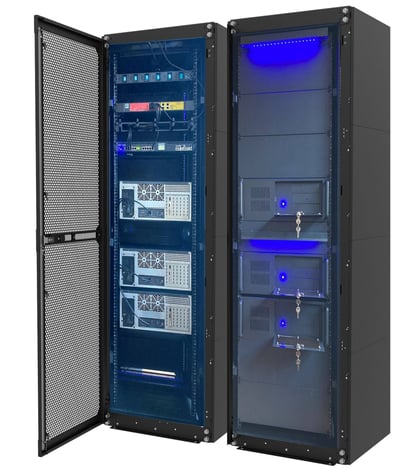
A physical environment represents in a simplified way a typical ATC facilities.
This subset of the laboratory shall help to gain hands-on experience in bug-discovery and fixing. It includes:
- connection to the SMC solution
- physical environment of 3 servers, applications and databases, a physical network with routers and software switches, monitoring points and emulated data. Monitoring can be made on power supply, UPS and battery, environmental factors (heating, cooling), as well as fire and security
- the teacher is able to degrade the system
Technical Training Laboratories
The user can even include technical training laboratories which allow to set up training and monitoring infrastructures for
- electronics (analog, sequential, combinatory) lab
- analog and digital communication lab
- microprocessors lab
- trouble-shooting lab
Please also look at the various other articles and pages on our system monitoring and control solution.
Let's talk
Contact us to discuss possible solutions for your ATC training center. Calls are non binding and will definitely help shaping your vision for your ATSEP training infrastructure.
Talk to you soon and stay tuned!

